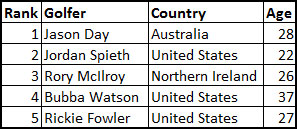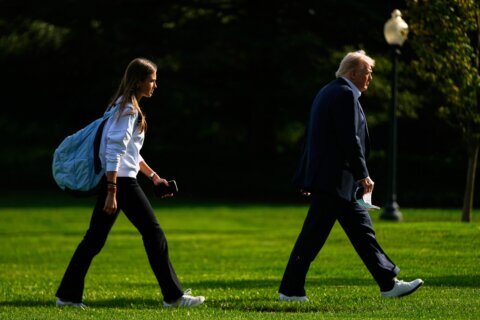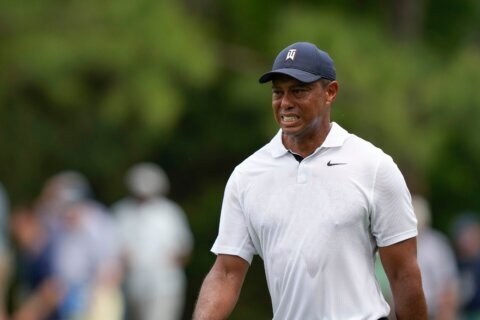WASHINGTON — The Masters is the unofficial beginning of golf season in earnest, when even casual observers turn their gaze toward Augusta, Georgia for a long weekend and take in the sport in its showcase setting. The actual result this weekend might be secondary to the interest level generated by the top group of talented players as they vie to be the best in the world and to inspire the next generation of golf.
This is so important, as a couple of years ago the alarm bells began to sound, warning of the sport’s impending death. One report said 400,000 golfers left the sport in 2013; TaylorMade’s sales plummeted. Perhaps even more disconcerting, the National Golf Foundation reported 200,000 players under 35 abandoning the game in 2013.
Much of the game’s decline seemed to correlate with the fall from grace of its singular star, Tiger Woods. But even as some signs looked bleak, there were positive developments. In that same year, 2013, almost 260,000 women took up golf, and the percentage of golfers who are women has risen from 20 percent in 2010 to 24 percent as of last year. After dipping as low as an even $5 per share in late 2011, Callaway’s stock price has had a slow but steady rise back above $9 since.
Attracting more young players remains a vital concern, though. That’s where the push for more young golfers takes on even more importance. There are now four major junior golf programs, all of which set participation records in 2015.
“Participation among junior golfers in the game is up 20 percent from 2010 to 2015, so that obviously bodes well for the game,” says Steve Mona, CEO of the World Golf Foundation.
Those golfers need people to look up to, and today’s explosion of young players — especially young by golf standards — provides a perfect opportunity.
A quick look at the World Golf Rankings shows four of the top five players in the world — Jason Day, Jordan Spieth, Rory McIlroy and Rickie Fowler — are rising stars aged 28 or younger. They have combined to win five of the last eight major championships, creating the potential for the kind of long-lasting rivalries upon which the game’s golden eras have been built.

Last year’s Masters saw a 26 percent final-round increase in viewership, thanks to the emergence of Spieth, the next best American hope to follow in Woods’ shoes as the dominant player of his generation. In fact, the PGA Tour posted gains in television ratings for 39 of its final 52 third and fourth rounds of tournaments last year over 2014. Spieth’s appearance in the PGA Tournament of Champions led to double the ratings from a year prior.
But how much were those numbers propped up by the continuing saga of Woods’ attempted comeback? The Wyndham Championship viewership was up 160 percent as Woods was in contention, and despite being a relatively minor event, topped third-round ratings for both the U.S. Open and Open Championship.
There will be no Woods at this year’s Masters, and the timetable for his return to the sport remains uncertain. So it will be up to this new crop to continue to generate interest.
“I think there’s no question that this infusion of exciting, young talent has picked up the mantle,” Mona says. “There’s a tremendous nexus of talent that is coming together.”
And just as important as the Spieths of the world are the Days — players who weren’t raised on country clubs, who come from working class, mixed-race backgrounds.
“We want golf to look how America looks,” Mona says. “You have to have people that look like you to create role models for people to want to emulate.”
That also means embracing the pace of life in 2016, when a four- or five-hour round of golf simply isn’t practical for many kids. Establishments like Topgolf — which count toward the nearly $70 billion golf industry, but not toward the aforementioned participation numbers — are providing new ways of introducing the game to young players. Mona actually met with Topgolf executives a few weeks ago to discuss how to try to capitalize on interest in each side form of the sport.
“It really responds to a lot of the issues of the day in terms of all sorts of entertainment,” he says, highlighting not only the reduced time commitment, but the engaged, technology-driven social setting. “We think it clearly provides a path to the traditional game.”
The youth programs, the Topgolf, all of it has a chance to help solidify the game for the next generation. But there’s no single opportunity to better galvanize interest than the game’s best young players dueling on the sport’s biggest stage.







